water worlds
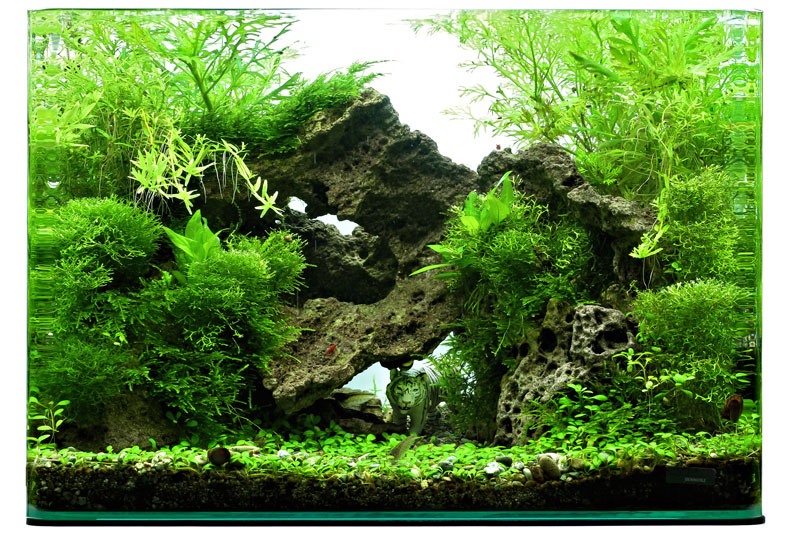
Nano aquariums have been an integral part of the diversity of aquatics for years. Contrary to all the criticism, miniature aquaria work very well when important criteria are met. With the Nano products, which are perfectly coordinated, a stable biological balance can be easily created.
An animal population with the right selection and number of animals is important to this. Dwarf shrimps, dwarf crabs, and snails play the main role here. You can even keep Nano fish in the larger Nano tanks.
Warning! Nano aquariums can be addictive!
Thanks to their small size, a suitable placement can be found anywhere in the living room or office. It takes only a few minutes to move them to another room thanks to their small size and light weight.
Be bold with boulders...
In smaller aquariums, the stone and root decorations chosen are usually too small. It is amazing how a large stone in a Nano aquarium can become a rock face. When choosing stones you should limit yourself to one variety in order to achieve a particularly natural appearance.
Roots also get a different dimension when they are positioned skilfully. Especially slender and delicate roots are very popular in Nano aquariums.
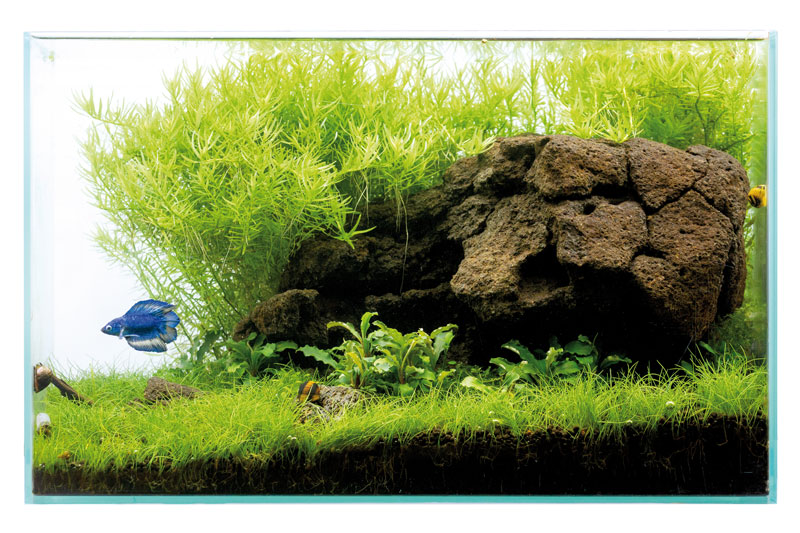
Step by Step - a Nano Water World is born
Follow this quick and easy tutorial to see how a nano aquarium is setup in no time and an appealing underwater world is created:
|
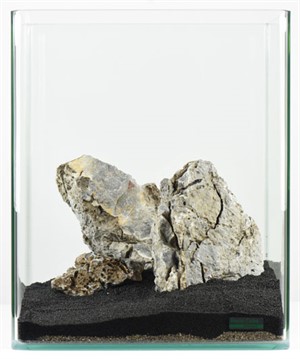
Step 1
Substrate and black gravel form the substrate. Position water neutral stone material decoratively.
|
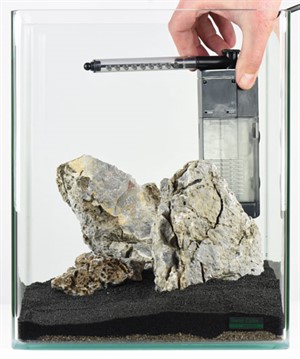
Step 2
Install a Nano corner filter in one of the two back corners. Subsequent plant growth will hide the filter.
|
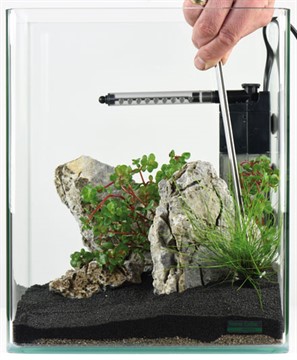
Step 3
Plant the background plant Rotala rotundifolia 'Orange Juice' in the corner near the filter.
|
|
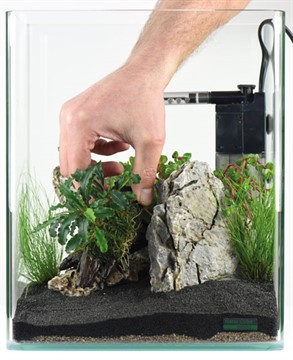
Step 4
Roots planted with Bucephalandra are placed between the stones and Eleocharis acicularis is added for nice details.
|

Step 5
The grass plant Lilaeopsis brasiliensis makes the end of the planting.
|
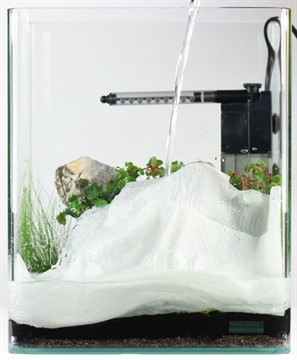
Step 6
Now the water is added. It is helpful to use a paper towel to prevent the substrate from swirling up.
|
Step 7
The remaining equipment such as the CO2 diffuser and lighting is installed.
In a few days, you can already see that the plants have grown. You see, it is not difficult to set up a Nano aquarium and it is really fun.
Enjoyed this step by step tutorial?
Check out the Step by Step Beginner Guide, or have a look into our aquarium inspiration center for moe tutorials like this one.
Plants for the nano aquarium
Small aquariums need small plants! For this reason, some aquarium classics, like most Echinodorus species, are not suitable for Nano Tanks.
In the past 10 years, however, the selection of small-sized species has grown considerably and many of them are impressive additions - not just for nano aquariums.
The very popular aquascaping certainly has played a role. Therefore, the following recommendations also apply to this special design of underwater landscapes.
Here we have created an overview of plants that are perfectly suitable for Nano aquariums and are some of the favorite plants by the majority of aquascapers out there.
When size matters – nano fish, shrimps and snails
Nano aquariums have been an integral part of aquaristics for years. At the beginning of the nano boom in 2008, shrimps were the big „stars“ in the miniature underwater landscapes. Now, there is an extremely wide range of different types and breeds.

For a long time, caring for fish in a nano aquarium has been an absolute taboo because of the lack of living space for the popular species.
However, the demand for smaller fish and the availability of so-called "nano-fish" have changed everything.
Little by little, many snail species suitable for aquaristics were discovered that are not only good looking, but also hard-working algae killers.
In normal sized aquariums, nano-fish are hardly noticed and are often bothered by larger fish. In a nano tanks, however, they come into their own, full beauty. Many species do not grow larger than 2-2.5 cm and therefore can be cared for as a smaller group of up to 10 fish in a 30+ L nano tank. The minimum volume of 30 L must always be ensured when fish are kept in aquariums!
Betta splendens fighting fish, with its many fantastic colors and shapes, is a very popular fish in nano aquaristics. For many children and teenagers, a Nano aquarium with a fighting fish is the highlight in their rooms.
For a 60 L or 55 L aquarium, the selection of fish is significantly larger, the care for species with a size of 3-4 cm is possible. How about some fancy Guppies?
To ensure that nano-fish feel comfortable,
there are a few important criteria to consider:
- The aquarium must have at least 30 L volume.
- Rule of thumb - approx. 1 cm fish per 1 liter of water.
- If the fish is fully grown by 2.5 cm, you can maintain about 10 fish in a 30-liter Nano aquarium.
- It is better to plan for fewer fish than too many.
- Ideally, only 1-2 species should share an aquarium.
- Economical feeding, only as much as the fish eat in 2-3 minutes, is also redommended.
- Remember the weekly partial water change!